Officials and local government experts unanimously approved the Metropolitan Washington 2030 Climate and Energy Action Plan today, outlining collaborative actions the region should take to meet its shared climate goals. The plan was developed and approved by the Metropolitan Washington Council of Governments (COG) Climate, Energy, and Environment Policy Committee (CEEPC).
“Achieving our regional goals on climate will require unprecedented action, across sectors, and at all levels of government,” said Penny Gross, COG CEEPC Chair and Fairfax County Supervisor. “This plan, developed by area governments guided by international best practices, is a regional roadmap for both mitigating climate change, but also ensuring that we’re resilient in the face of climate impacts.”
According to the Intergovernmental Panel on Climate Change, to avoid the most severe climate impacts, global greenhouse gas (GHG) emissions must fall by at least 45 percent from 2010 levels by 2030 and to carbon neutrality by 2050.
To acknowledge this urgency, officials on the COG Board of Directors approved a new GHG emissions reduction goal for the region in October—a 50 percent reduction in GHG emissions below baseline levels, or 2005 emission levels, by 2030.
According to a regional GHG inventory summarized in the plan, more than 90 percent of the region’s GHG emissions come from residential and commercial building energy consumption and transportation. The action plan facilitates a regional move toward zero energy buildings, zero emission vehicles, and zero waste, among other priority actions.
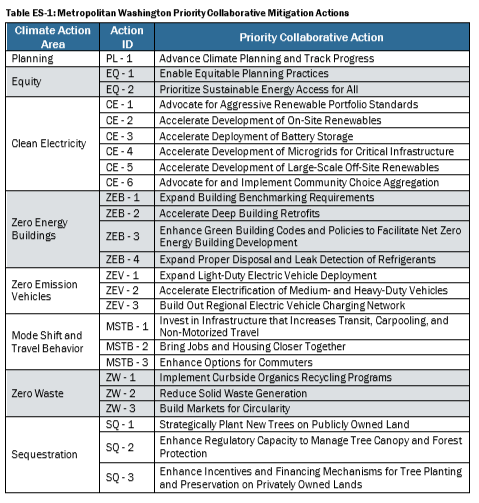
The plan also assesses climate hazards and vulnerabilities for the region, including measuring the risk of extreme heat and weather events, and considering the disproportionate impact of climate change on vulnerable populations. Actions like implementing resilient infrastructure, improving storm drainage to lessen flood risk, or planting trees in communities experiencing higher urban heat island temperatures will move the region toward achieving its goal of becoming a Climate Ready Region and eventually a Climate Resilient Region.
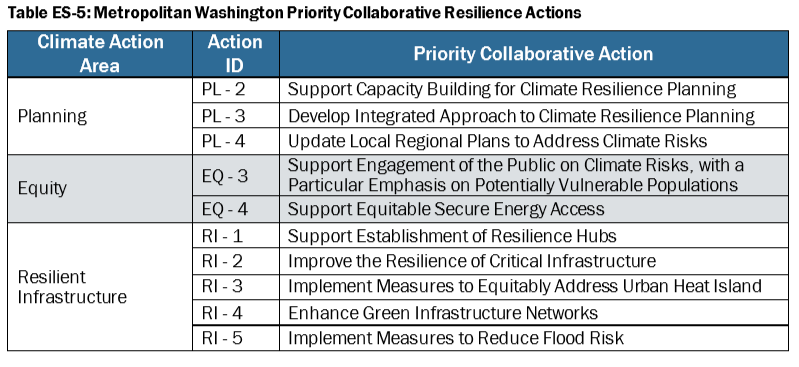
“This climate plan is the result of several years of coordination by area jurisdictions,” said Gross, “Thanks to their input, and to champions like the late Falls Church City Council Member Daniel Sze who served as CEEPC chair until he was unable, our region is taking critical steps forward on climate mitigation and resiliency.”
In 2019, COG was named a Regional and Metro Scale Climate Leader by the Global Covenant of Mayors for Climate and Energy (GCoM). COG and its members have followed GCoM’s framework of global best practices for climate planning in developing the action plan.
Background on the Region's Climate Progress
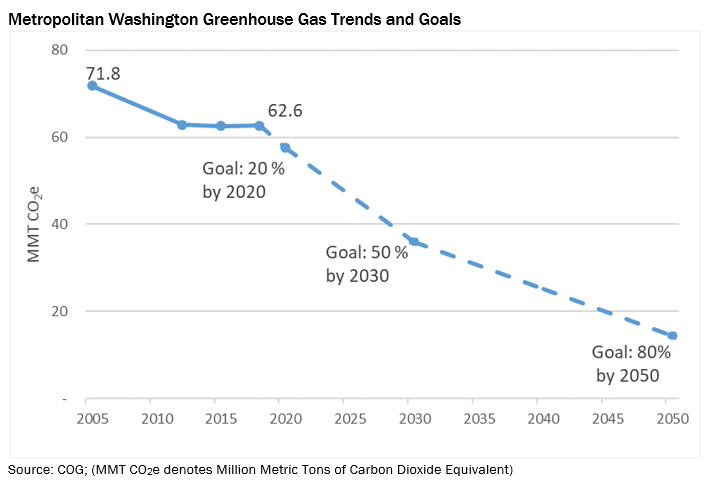
The COG Board first set a series of ambitious goals in 2008 to reduce emissions: 10 percent below 2005 levels by 2012, 20 percent below by 2020, and 80 percent below by 2050. And this year, a new 2030 goal—a 50 percent reduction in GHG emissions below 2005 levels.
The region surpassed its 2012 goal, and reduced emissions by 13 percent by 2018. This was achieved despite a nearly 20 percent growth in area population over that time. However, inventories show the rate of emission reductions slowing, with the region likely to fall short of its 2020 goal.
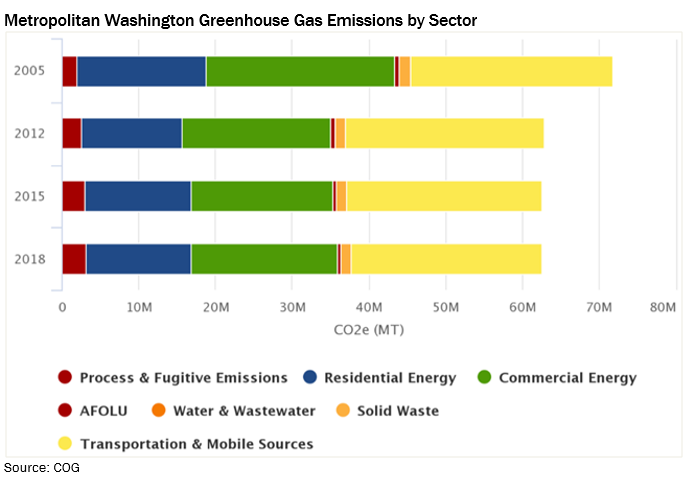
According to COG’s GHG inventory, much of the region’s progress reducing emissions since 2005 can be attributed to a cleaner energy grid, cleaner cars, and reduced vehicle miles traveled per person. The main drivers of increased emissions include population growth, commercial space, and hydrofluorocarbons (such as those created for refrigeration).
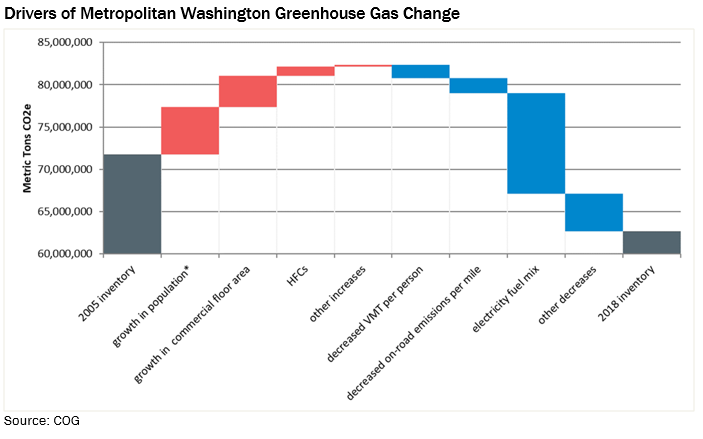
MORE: Metropolitan Washington 2030 Climate and Energy Action Plan